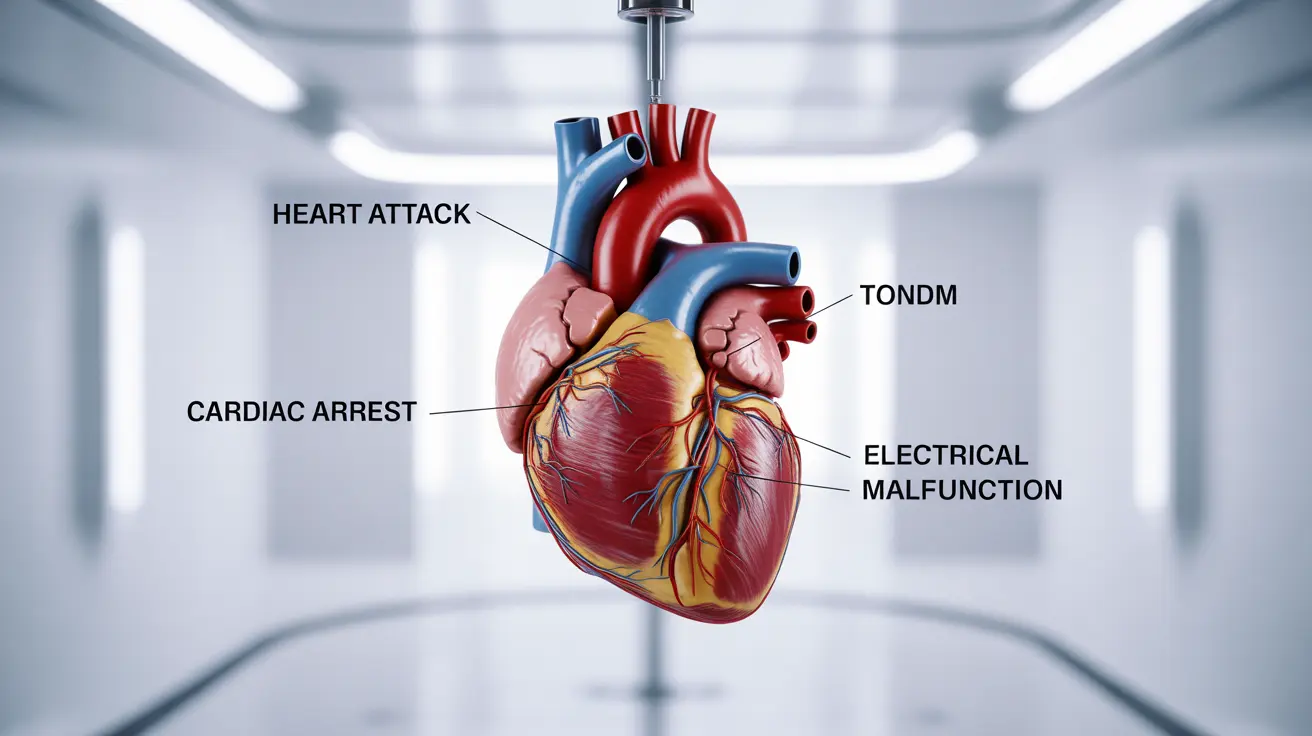When it comes to life-threatening cardiac events, understanding the difference between a heart attack and cardiac arrest is crucial for recognizing and responding to these emergencies. While both conditions are serious medical emergencies, they differ significantly in their mechanisms, symptoms, and immediate dangers to life.
This comprehensive guide will explore the key differences between these conditions, their relative dangers, and what you need to know about prevention, recognition, and response to these cardiac emergencies.
Understanding Heart Attacks and Cardiac Arrest
A heart attack occurs when blood flow to a part of the heart muscle is blocked, typically by a blood clot. The affected heart tissue begins to die from lack of oxygen, but the heart usually continues beating. In contrast, cardiac arrest is an electrical malfunction where the heart suddenly stops beating altogether, causing immediate loss of consciousness and cessation of breathing.
Comparative Danger Levels
Cardiac arrest is generally considered more immediately dangerous than a heart attack because it causes an instant cessation of heart function and blood flow to vital organs. Without immediate intervention, cardiac arrest leads to death within minutes. Heart attacks, while extremely serious, often allow more time for medical intervention as the heart continues pumping.
Survival Statistics
The survival rates for these conditions differ significantly. With prompt medical attention, heart attack survival rates can exceed 90%. However, cardiac arrest survival rates outside of a hospital setting are much lower, typically less than 10% without immediate intervention.
Recognition and Response
Heart Attack Symptoms
- Chest pain or pressure
- Pain radiating to arms, neck, or jaw
- Shortness of breath
- Nausea and cold sweats
- Fatigue
Cardiac Arrest Signs
- Sudden collapse
- Complete unresponsiveness
- No breathing or pulse
- Loss of consciousness
Emergency Response Protocols
For cardiac arrest, immediate CPR and use of an automated external defibrillator (AED) are critical for survival. Every minute without intervention reduces survival chances by 7-10%. For heart attacks, while urgent medical attention is necessary, the immediate response focuses on calling emergency services and possibly taking prescribed medications like aspirin.
Risk Factors and Prevention
Both conditions share many common risk factors, including:
- High blood pressure
- High cholesterol
- Smoking
- Obesity
- Family history
- Physical inactivity
- Diabetes
Prevention strategies focus on lifestyle modifications and regular medical check-ups to monitor and manage these risk factors effectively.
Frequently Asked Questions
What are the primary differences between a heart attack and cardiac arrest, and how do they affect survival rates?
A heart attack is a circulation problem where blood flow to the heart is blocked, while cardiac arrest is an electrical problem where the heart stops beating entirely. Survival rates for heart attacks are significantly higher (90%+ with prompt treatment) compared to cardiac arrest (less than 10% without immediate intervention).
How do you treat cardiac arrest effectively to increase survival chances?
Immediate CPR and use of an AED are essential for cardiac arrest survival. The chain of survival includes early recognition, calling emergency services, quality CPR, and rapid defibrillation when appropriate.
Can a heart attack lead to cardiac arrest, and what are the risk factors for both conditions?
Yes, a heart attack can trigger cardiac arrest. Both conditions share risk factors including high blood pressure, smoking, obesity, and diabetes. Managing these risk factors through lifestyle changes and medical treatment is crucial for prevention.
What are the symptoms of cardiac arrest, and how quickly should medical help be sought?
Cardiac arrest symptoms include sudden collapse, unconsciousness, and absence of breathing or pulse. Medical help must be sought immediately - call emergency services within seconds of recognizing these symptoms.
How can I prevent or reduce the risk of having a heart attack or cardiac arrest?
Prevention strategies include maintaining a healthy diet, regular exercise, not smoking, managing stress, controlling blood pressure and cholesterol, and having regular medical check-ups. Early intervention for cardiovascular risk factors is key to prevention.




